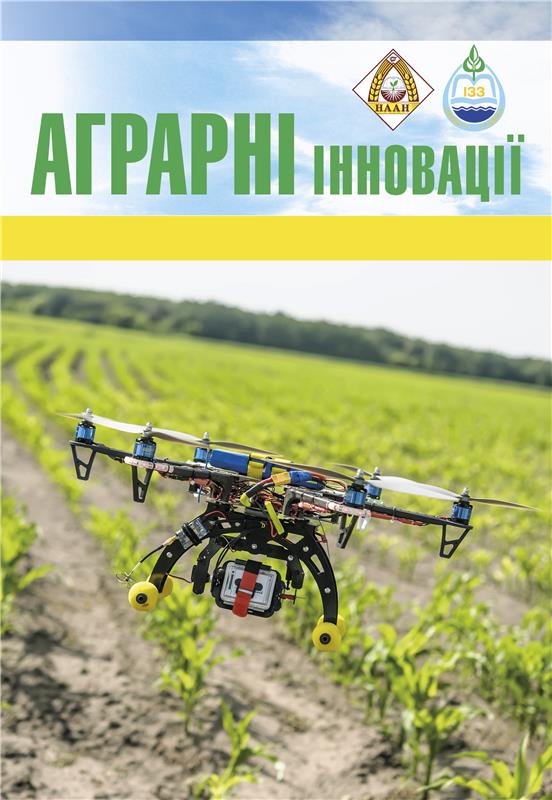PEULARITIES OF THE FORMATION OF MODERN SUNFLOWER HYBRIDS PRODUCTIVITY IN THE ZONE OF UNSTABLE MOISTURE
Abstract
The varietal component plays an important role in increasing the yield and quality of sunflower, since approximately 30-40% of the variance in yield depends on the introduction of new hybrids. Even within the same crop and biological-morphological group, different hybrids demonstrate different responses to environmental factors. Purpose.The aim was to study the features of productivity formation in modern sunflower hybrids, to identify key moments in the manifestation of economically valuable traits in the zone of unstable moisture. Methods: Nine hybrids were studied: PIONER P64LP170, SYNGENTA LAZURI, SYNGENTAMICHIGAN, LG 50635, LG50455, LG5555, Lidea Belsis, Lidea Emeric, Lidea Oasis. Yield was determined by continuous threshing, structural analysis was performed on 25 typical plants. Activity indicators of enzyme systems were determined as an aftereffect of Eurolighting. Results.The increase in the activity of enzyme systems in sunflower leaves when applying Eurolighting, especially in critical phases of hybrid development, is probably due to an increase in the intensity of metabolic processes aimed at neutralizing the negative impact of the herbicide. At the same time, the reaction of different enzyme systems may be variable and not always statistically significant compared to the control (hybrid treated with water without herbicide). The highest activity is mainly demonstrated by hybrids of the Limagrain selection, the PIONER P64LP170 hybrid was unstable, the others occupied an intermediate position, the Lidea hybrids showed significant differences in the activity of catalase as an enzyme. The yield was influenced by two factors – the climatic conditions of the year and the genotype of the hybrid. A comparative test showed that the Lidea Oasis and Syngents Michigan hybrids prevailed in terms of yield, and the LG 50455 and Singenta Lazuri hybrids were slightly inferior to them, occupying an intermediate position. The high yield of the Lidea Oasis hybrid is determined by the higher mass of seeds from one basket and the mass of a thousand seeds, while the second hybrid Syngents Michigan is due to the higher diameter of the basket compared to the average other indicators.In terms of huskiness, the PIONER P64LP170 and Lidea Oasis hybrids stood out from the lower ones, and in terms of oiliness, the Singenta Lazuri hybrid was positive, which can be considered a source of high quality. Findings. The highest activity of enzyme systems is mainly demonstrated by hybrids of Limagrain selection, the PIONER P64LP170 hybrid was unstable, but its significance is insufficient for a negative impact on ontogenesis. The Lidea Oasis and Syngents Michigan hybrids prevailed in terms of yield, which was due to different indicators of higher seed weight per basket and higher weight of 1000 seeds and due to the diameter of the basket compared to the average other indicators. In terms of quality, the Singenta Lazuri hybrid showed superiority, which was slightly inferior to the best forms in terms of yield.
References
P. 25–37.
2. Chekhova I. Sunflower is the main oil crop in Ukraine.
Helia. 2022. 45(77). P. 167‒174.
3. Domaratskiy E., Bazaliy V., Domaratskiy O., Dobrovol'skiy A., Kyrychenko N., Kozlova O. Influence of Mineral Nutrition and Combined Growth Regulating Chemical on Nutrient Status of Sunflower. Indian Journal of Ecology. 2018. 45(1). P. 126‒129.
4. Duca M., Port A., Burcovschi I., Joiţa-Păcureanu M., Dan M. Environmental response in sunflower hybrids: a multivariate approach. Romanian Agriculture Research.
2022. 39. P. 1–14.
5. Duca M., Mutu A., Port A., Clapco S. Genotype- environment interaction in the variability of yield associated indices under stress conditions in sunflower.
Helia. 46(79). 2023. P. 201–214.
6. Ghaffari M., Shariati F. Genetic analysis of sunflower fatty acids under optimum and water stressed conditions. Helia. 2023. 46(78). P. 123–142.
7. Gamajunova V., Kuvshinova A., Kudrina V., Sydiakina O.
Influence of biologics on water consumption of winter barley andsunflower in conditions of Ukrainian Southern Steppe. Innovative Solutions In Modern Science. 2020. 6(42). P. 149–176.
8. Nedealcov M., Duca, M., Dencicov, L. Sunflower’s productivity in the context of climatic changes on Republic of Moldova’s territory. Helia. 2017. 40. P. 115–132.
9. Sydiakina O., Ivaniv M. Sunflower hybrids productivity depending on the rates of mineral fertilizers in the south of Ukraine. Helia, 46(79). 2023. P. 245–259.
10. Vasylkovska, K., Andriienko, O., Malakhovska V., Moroz O. Analysis of changes in comfortable sunflower growing areas using the example of Ukraine. Helia.
2022. 45(77). P. 175–189.






